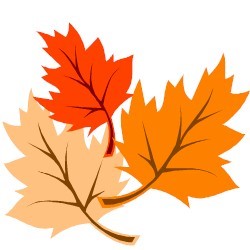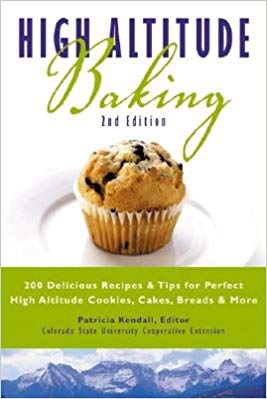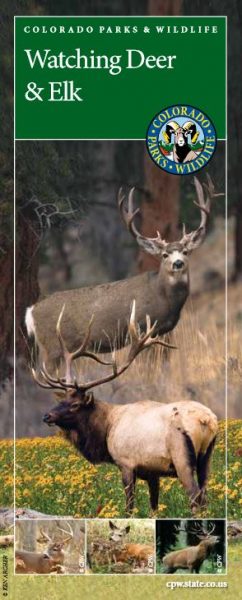 Today is the first day of fall. Days and nights are getting cooler, pumpkin-flavored products are everywhere, and the leaves are changing to brilliant reds and golds. There’s a lot to love about fall — except, of course, the fact that it means winter is coming!
Today is the first day of fall. Days and nights are getting cooler, pumpkin-flavored products are everywhere, and the leaves are changing to brilliant reds and golds. There’s a lot to love about fall — except, of course, the fact that it means winter is coming!
Around the House
Now is the time for planting bulbs for spring flowers like tulips, hyacinth, and crocus. Late September is the best time to plant bulbs, so that they have enough time to take root before the ground freezes. The Colorado State University Extension has prepared a helpful fact sheet with information on fall-planted bulbs, including planting depth and how to fertilize.
The hot summer sun is gone, but fall can still have dry periods, so the Extension also recommends continuing to water lawns, trees, and shrubs into the fall and winter. During periods with little rain or snow, the Extension suggests watering once or twice a month on days where temperatures exceed 40 degrees Fahrenheit. Watering is especially important for newer trees and shrubs, and should be done mid-day to avoid freezing at night. More tips can be found in the Extension’s Fall and Winter Watering fact sheet.

Fall is also a great time for baking. Check out High Altitude Baking from our library (available through Prospector) for 200 recipes adjusted for Colorado altitudes. Included are fall favorites like pumpkin muffins, applesauce cake, molasses cookies, corn bread, and chocolate zucchini cake. The Colorado Department of Agriculture also features seasonal recipes on their website. This month’s recipe is Beet and Bacon Hash.
Around the State
There are many ways to enjoy the outdoors in Colorado during fall. The Colorado Tourism Office’s website has recommendations for where to go to see fall color. Colorado Parks and Wildlife’s website features fall colors in State Parks, as well as information on fall camping. See their publication Rush to the Gold for eight great trip ideas.
The mountains aren’t the only places to spend time outdoors in the fall. It’s also harvest season in the state’s agricultural areas. See the Department of Agriculture’s website for a list of pumpkin patches and corn mazes and a list of farmers’ markets. The department also publishes an annual Farm Fresh Directory listing farmers’ markets, roadside stands, agritourism activities, and restaurants featuring locally-sourced food.
Fall offers many opportunities for wildlife viewing. It is migratory bird season, and Colorado is part of a major flyway. Some Colorado birds migrate south Arizona, Texas, and other warmer states or to Mexico or Central or South America. Other birds, like chickadees, Rosy Finches, nuthatches, and juncos often simply move from the mountains to lower elevations along the front range. How do birds know when and where to migrate? Sights and Sounds of Autumn, a publication from the Colorado Division of Wildlife, suggests that birds use a number of clues including topography, wind turbulence, and the earth’s magnetic field. Many smaller birds migrate at night, so it has been theorized that birds use the stars for navigation. Migrating after dark also provides protection from predators. Larger birds and waterfowl, however, are more likely to migrate during the day. These include Sandhill Cranes, which can be seen in near Monte Vista in October. See the Colorado Birding Trail guidebooks on Southeastern and Southwestern Colorado for places to view Sandhill Cranes.
 It’s also a good time to view Colorado’s larger wildlife. The bugle of an elk or the headbutting of bighorn sheep are indicators of fall mating season. Deer and moose can also frequently be seen during fall. Autumn is mating season for other kinds of wildlife, too. Male brook trout can be seen flashing bright red and orange colors to compete with one another and attract females, which you can read more about in Sights and Sounds of Autumn.
It’s also a good time to view Colorado’s larger wildlife. The bugle of an elk or the headbutting of bighorn sheep are indicators of fall mating season. Deer and moose can also frequently be seen during fall. Autumn is mating season for other kinds of wildlife, too. Male brook trout can be seen flashing bright red and orange colors to compete with one another and attract females, which you can read more about in Sights and Sounds of Autumn.
Winter will be here before you know it, so enjoy this beautiful season while it lasts!
- How to Spot the Differences Between Eagles and Hawks - August 16, 2021
- How Transportation Projects Help Tell the Story of Colorado’s Past - August 9, 2021
- Time Machine Tuesday: The Night the Castlewood Canyon Dam Gave Way - August 3, 2021